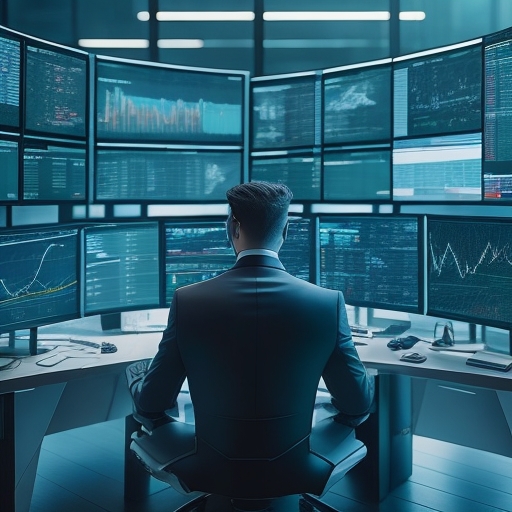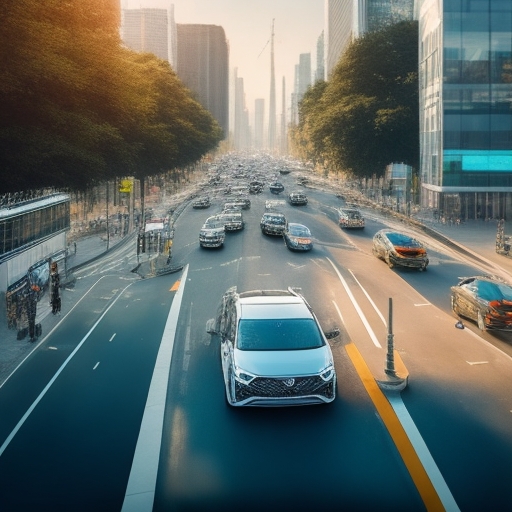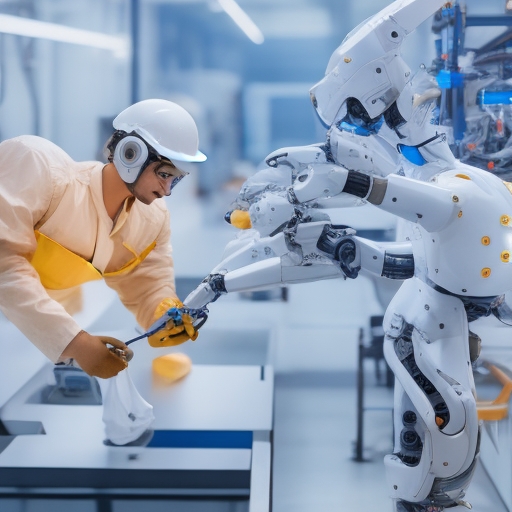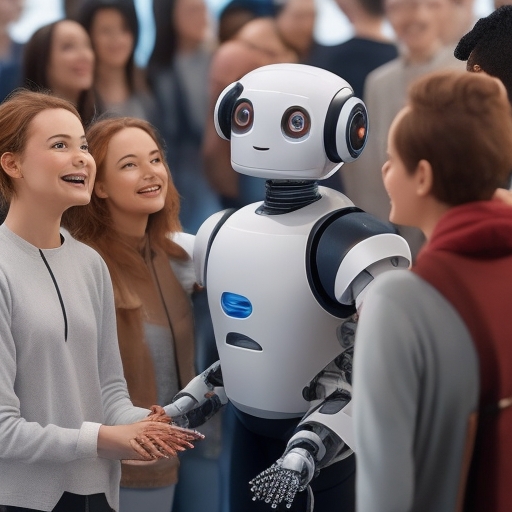AI and Robotics: Collaborative Potential for Innovation
Welcome to an exciting exploration of the collaborative potential between artificial intelligence (AI) and robotics! In this blog, we will delve into the dynamic relationship between these two cutting-edge technologies and how their synergy holds immense promise for driving innovation across various industries. Prepare to embark on a fascinating journey where AI and robotics intertwine to shape the future of technology and human progress.
The Rise of AI
AI has witnessed exponential growth, revolutionizing industries and transforming the way we live and work.With its capacity to analyze extensive volumes of data, identify patterns, and render intelligent choices, AI has evolved into an indispensable asset across various domains. From healthcare and finance to transportation and entertainment, AI has proven its mettle, opening up new possibilities and augmenting human capabilities. Let us delve into the extraordinary applications of AI across various sectors.
AI in Healthcare:
AI-powered diagnostic systems can detect diseases with remarkable accuracy, enabling early intervention and personalized treatment plans. Furthermore, AI algorithms possess the capability to examine medical records, unraveling intricate patterns and trends, thereby resulting in enhanced patient outcomes and the facilitation of more streamlined healthcare provision.
AI in Finance:
AI-powered algorithms empower advanced financial analysis, facilitating risk assessment, fraud detection, and algorithmic trading. With the power to process vast amounts of financial data in real-time, AI algorithms assist in making informed investment decisions and optimizing portfolio management.
AI in Transportation:
Self-driving cars, powered by AI, are set to transform the future of transportation. These vehicles leverage AI to navigate roads, interpret traffic patterns, and make split-second decisions, leading to safer and more efficient journeys. Moreover, AI plays a crucial role in optimizing logistics, route planning, and supply chain management.
AI in Entertainment:
From personalized recommendations on streaming platforms to AI-generated content, such as music and artwork, AI is revolutionizing the entertainment industry. Cutting-edge technologies like natural language processing and computer vision are enhancing user experiences and redefining the boundaries of creativity.
The Evolution of Robotics
While AI has been making significant progress, robotics has been advancing in parallel, forging a seamless synergy. Robotics involves the design, development, and application of physical machines capable of carrying out tasks autonomously or with human guidance. Let's explore some of the key developments in robotics and how they align with the collaborative potential of AI.
Industrial Robotics:
Robotic arms and automation systems have transformed manufacturing and industrial processes. By integrating AI algorithms, robots can adapt to changing conditions, optimize workflows, and enhance productivity. Collaborative robots, known as cobots, work alongside humans, augmenting their capabilities and increasing overall efficiency.
Social Robotics:
Social robots, crafted to engage and communicate with humanity, are steadily gaining prominence. These robots can understand emotions, engage in conversations, and provide companionship. With the integration of AI, social robots can learn and adapt to human behavior, enabling more natural and intuitive interactions.
Medical Robotics:
Surgical robots have revolutionized the field of healthcare by enhancing precision, reducing invasiveness, and improving patient outcomes. Equipped with AI algorithms, these robots have the capability to analyze real-time data during surgical procedures, offering invaluable insights and aiding surgeons in making well-informed decisions.
The Collaborative Potential
Now, let us delve into the boundless collaborative potential that exists between AI and robotics, and witness how this alliance is poised to propel innovation across various industries.
Enhanced Automation:
By blending AI algorithms with robotics, automation processes gain intelligence and adaptability. AI-powered robots can acquire knowledge from their surroundings, make instantaneous decisions, and adjust seamlessly to dynamic environments, resulting in heightened productivity and efficiency.
Human-Robot Collaboration:
The synergy between AI and robotics enables human-robot collaboration in various domains. Robots possess the ability to execute monotonous and physically strenuous duties, liberating humans to dedicate themselves to imaginative and intricate obligations. With AI, robots can understand human gestures, voice commands, and work alongside humans seamlessly.
Solving Complex Problems:
AI and robotics together have the potential to tackle complex problems that require a combination of cognitive and physical abilities. For instance, during catastrophic situations, robots empowered by AI can traverse perilous landscapes, detect survivors, and offer crucial aid, thereby enhancing human rescue endeavors.
Appreciation
Congratulations on reaching the midpoint of this blog! We appreciate your commitment to exploring the collaborative potential between AI and robotics. Stay tuned for more exciting insights in the upcoming sections.
Ethical Considerations
As AI and robotics continue to advance, it becomes crucial to address the ethical implications associated with their collaborative endeavors. Some key considerations include:
1. Privacy and Data Security: With the integration of AI, robots collect and process vast amounts of data. Safeguarding this data and ensuring privacy protection is of utmost importance to prevent misuse and unauthorized access.
2. Job Displacement: The growing automation facilitated by AI and robotics gives rise to apprehensions regarding potential job displacement. It is essential to navigate this transition thoughtfully, reskilling and upskilling the workforce to adapt to the changing demands of the job market.
3. Bias and Fairness: AI algorithms, if not meticulously designed and diligently trained, have the potential to inherit biases from the data they acquire. Ensuring fairness and accountability in AI systems is crucial to avoid perpetuating societal biases and discrimination.
Future Possibilities
The future holds boundless and thrilling possibilities when AI and robotics collaborate. Let's explore some promising areas where this partnership shines:
1. Personal Robotics: AI-driven robots, tailored to cater to individual needs, spanning from household tasks to personal aid, possess the potential to revolutionize our lifestyles and redefine our interaction with technology.
2. Space Exploration: AI and robotics play a vital role in space exploration, enabling autonomous exploration, robotic missions, and extraterrestrial resource utilization. Collaborative efforts in these areas can unlock new frontiers in our understanding of the universe.
3. Healthcare Advancements:
AI-driven robots have the potential to completely transform the delivery of healthcare by offering tailored care, assisting in surgical procedures, and even acting as companions for the elderly or individuals with disabilities.
Conclusion
In conclusion, the collaborative potential between AI and robotics presents a remarkable opportunity for innovation across industries. As AI continues to evolve and robotics becomes more sophisticated, their integration holds immense promise. From enhanced automation and human-robot collaboration to solving complex problems and paving the way for futuristic possibilities, the synergy between AI and robotics is reshaping the future of technology. Embrace this exciting journey and stay curious as we witness the transformative power of AI and robotics unfold.
Love and Care from,
AI Helper
Hashtags: #AIandRobotics #InnovationRevolution #FutureTechCollab #TransformativeAI #CuttingEdgeRobotics


















Post a Comment